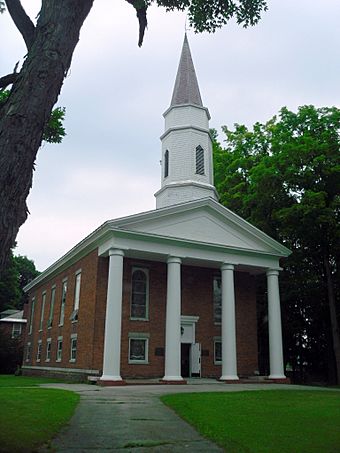Old Saratoga Reformed Church facts for kids
Quick facts for kids |
|
|
Saratoga Reformed Church, Old
|
|

Old Saratoga Reformed Church, June 2010
|
|
| Location | Jct. of Burgoyne and Pearl Sts., Schuylerville, New York |
|---|---|
| Area | 1.3 acres (0.53 ha) |
| Built | 1857 |
| Architectural style | Greek Revival |
| NRHP reference No. | 97001387 |
| Added to NRHP | November 7, 1997 |
The Old Saratoga Reformed Church is a very old and important building. It stands at the corner of Burgoyne and Pearl Streets in Schuylerville, New York. This town is located in Saratoga County, New York.
The church is part of the Reformed Church in America. It was built in 1857. The building has a special look called Greek Revival style. This style was popular for buildings that wanted to look grand and classic. The church was added to the National Register of Historic Places in 1997. This means it is recognized as a place important to history.
History of the Church
Early Beginnings
The Old Saratoga Reformed Church was first started in 1770. This was before the United States became its own country. The people in the area needed a place to worship.
Role in the Revolutionary War
During the American Revolutionary War, the church played a different role. It was used as a hospital for soldiers. This shows how important the building was to the community. It helped people during a very difficult time.
A Place of Worship
After the war, the church continued to be a place for people to gather. It has served its community for many years. The current building, built in 1857, has seen over 160 years of history. It stands as a reminder of the past.



